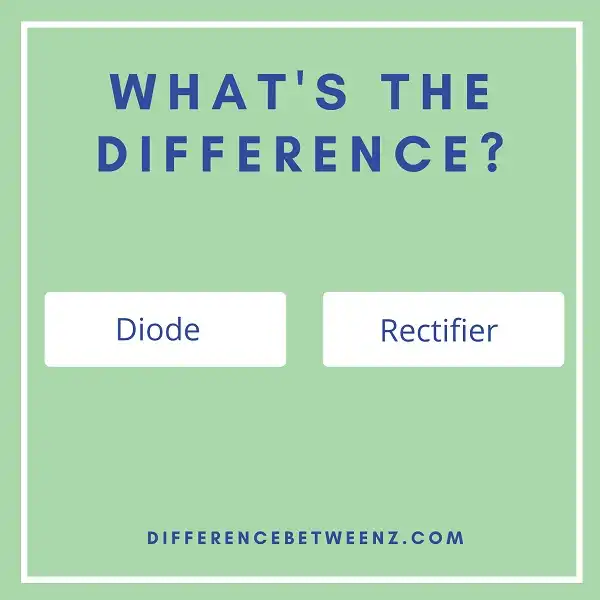A diode and rectifier are both electrical components, but they serve different functions in a circuit. A diode allows current to flow in one direction while blocking the flow of current in the opposite direction. A rectifier is used to convert alternating current (AC) into direct current (DC), which is needed for some devices. In this blog post, we will discuss the differences between a diode and a rectifier and how they are used in circuits.
What is Diode?
A diode is an electronic device that allows the current to flow in only one direction. The diode has two terminals, an anode and a cathode. The anode is the terminal that the current enters, while the cathode is the terminal that the current leaves. Diodes are typically made from materials like silicon or germanium, and they are used in a wide range of electronic devices. In general, diodes are used to rectify AC current, meaning that they convert it into DC current. Diodes can also be used to improve the efficiency of electrical circuits and protect sensitive electronic components from damage.
What is Rectifier?
The rectifier is an electrical device that converts alternating current (AC), which periodically reverses direction, to direct current (DC), which flows in only one direction. Rectifiers have many uses, including in power supplies where they convert AC to DC, in electronic testing equipment, and in welding where they convert AC to DC to provide a constant current.
- Rectifiers are also used to create half-wave rectification, full-wave rectification, and bridge rectification. Rectifiers can be made from diodes, vacuum tubes, thyristors, or other semiconductor devices.
- The most common type of rectifier is the diode rectifier, which uses one or more diodes to allow current to flow in only one direction. Rectifiers can be used as a standalone device or as part of another circuit.
- When used as part of another circuit, rectifiers can be used to create a capacitor-input filter or a transformer-coupled filter. Rectifiers are also used in voltage regulators to ensure that the output voltage is constant regardless of changes in the input voltage.
Rectifiers can be used in either single-phase or three-phase systems. Single-phase rectifiers are typically used for low-power applications while three-phase rectifiers are used for high-power applications.
Difference between Diode and Rectifier
- A diode is an electronic component that consists of two terminals, known as the anode and the cathode. The anode is the terminal that is connected to the positive lead, while the cathode is connected to the negative lead. Diodes are designed to allow current to flow in one direction only. This allows them to be used as rectifiers, which are devices that convert alternating current (AC) into direct current (DC).
- Rectifiers are a type of diode that is used to convert AC into DC. Rectifiers can be made from a single diode or a series of diodes. The most common type of rectifier is the half-wave rectifier, which only conducts current during the positive half-cycle of the AC waveform. Full-wave rectifiers are more efficient than half-wave rectifiers and can be made from either a center-tapped transformer or four diodes.
- Diodes and rectifiers are both electronic components that serve different purposes. Diodes are used to allow current to flow in one direction only, while rectifiers are used to convert AC into DC. Rectifiers can be made from a single diode or a series of diodes, while diodes can only be made from two terminals.
Conclusion
In conclusion, the diode is a one-way street for electricity, while the rectifier can convert AC to DC. There are many different types of diodes and rectifiers on the market today, so it’s important that you know which type your business needs in order to make the most of your energy efficiency. Have you ever wondered what the difference between a diode and a rectifier is? In this blog post, we take a look at both components and explain how they work. We also discuss some of the differences between different types of diodes and rectifiers so that you can make an informed decision about which component is best for your business.


